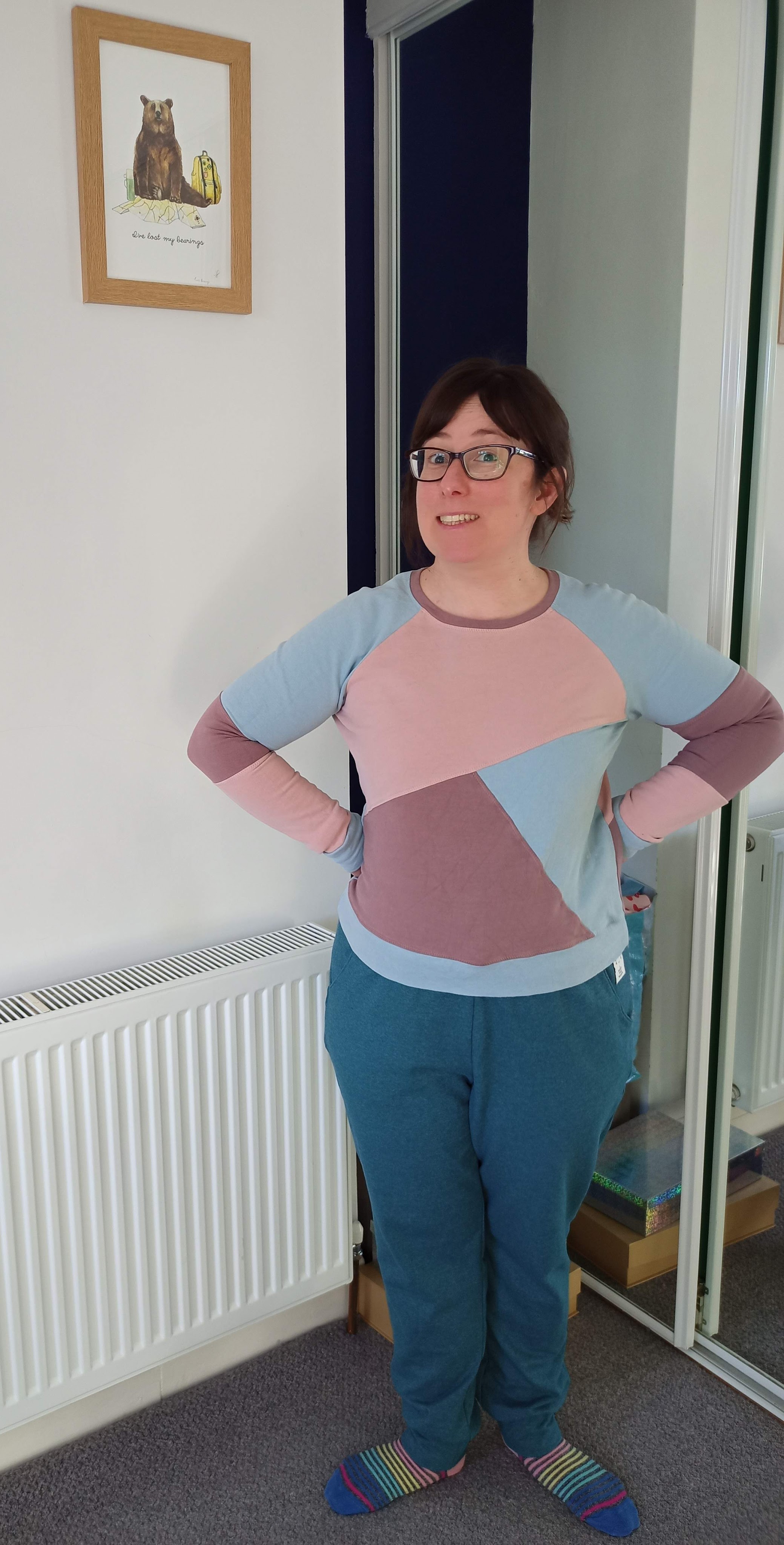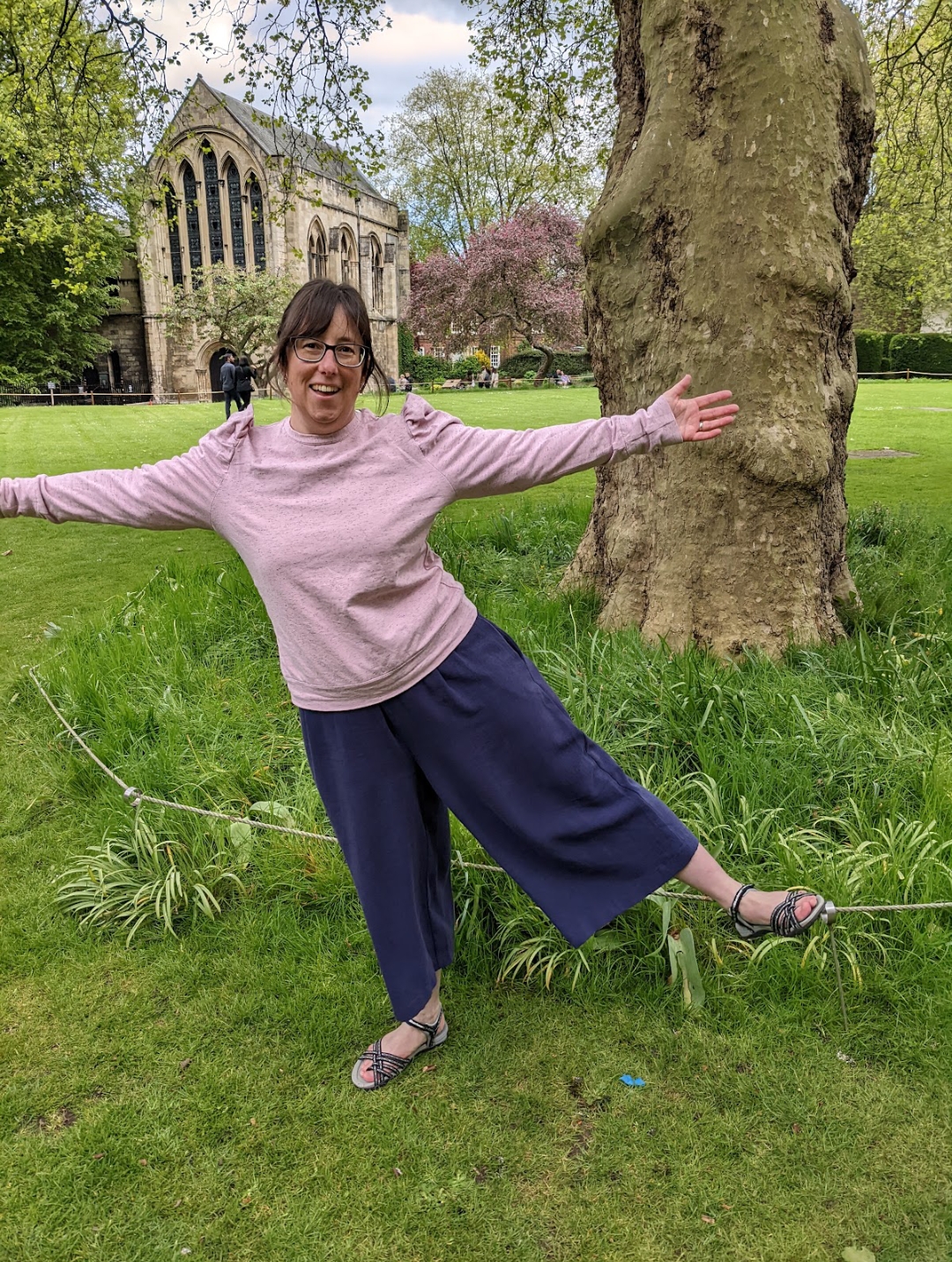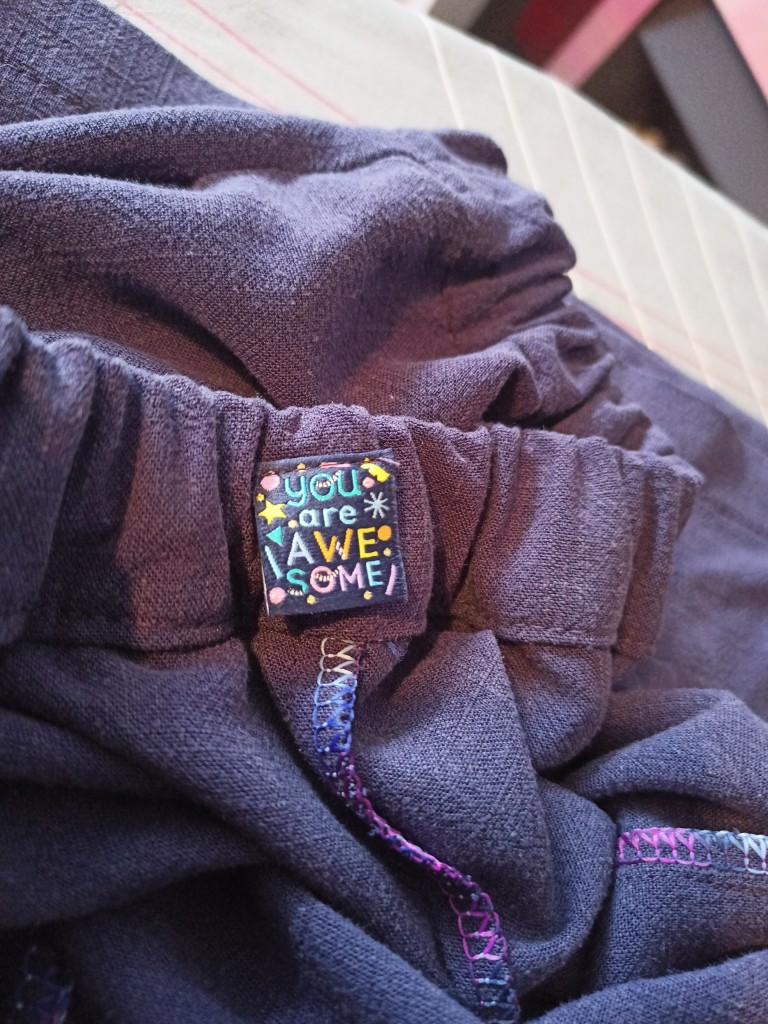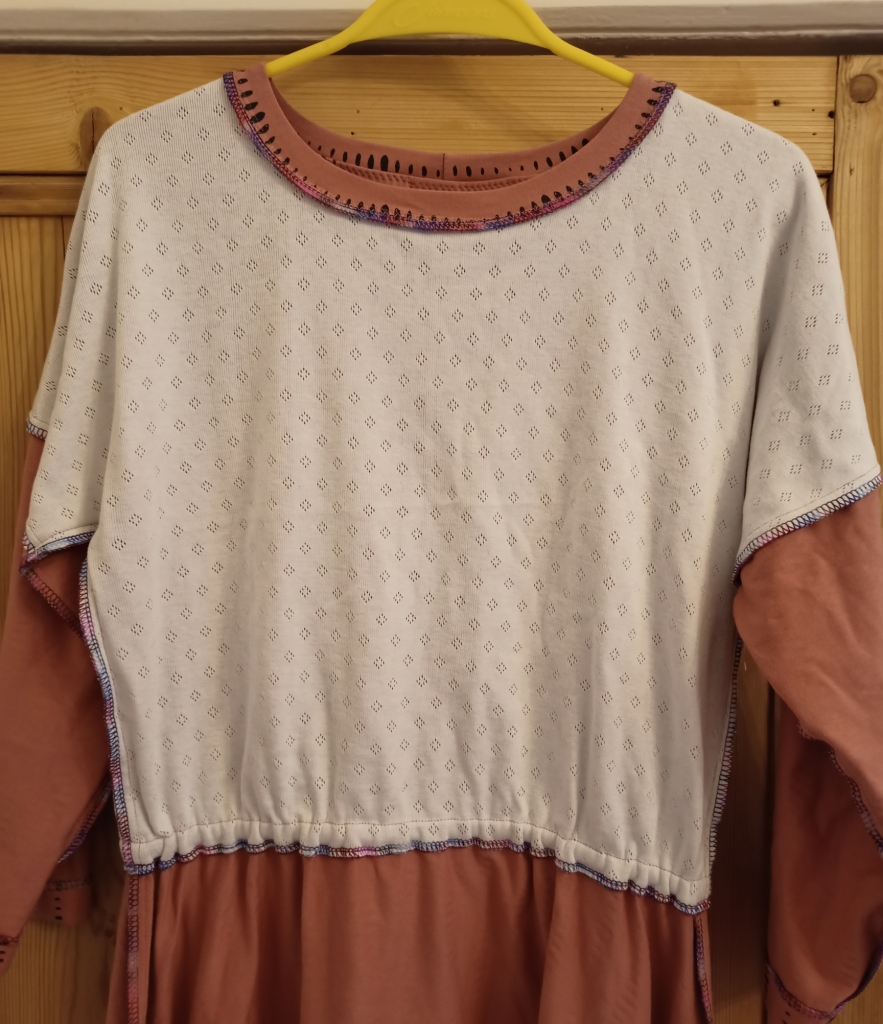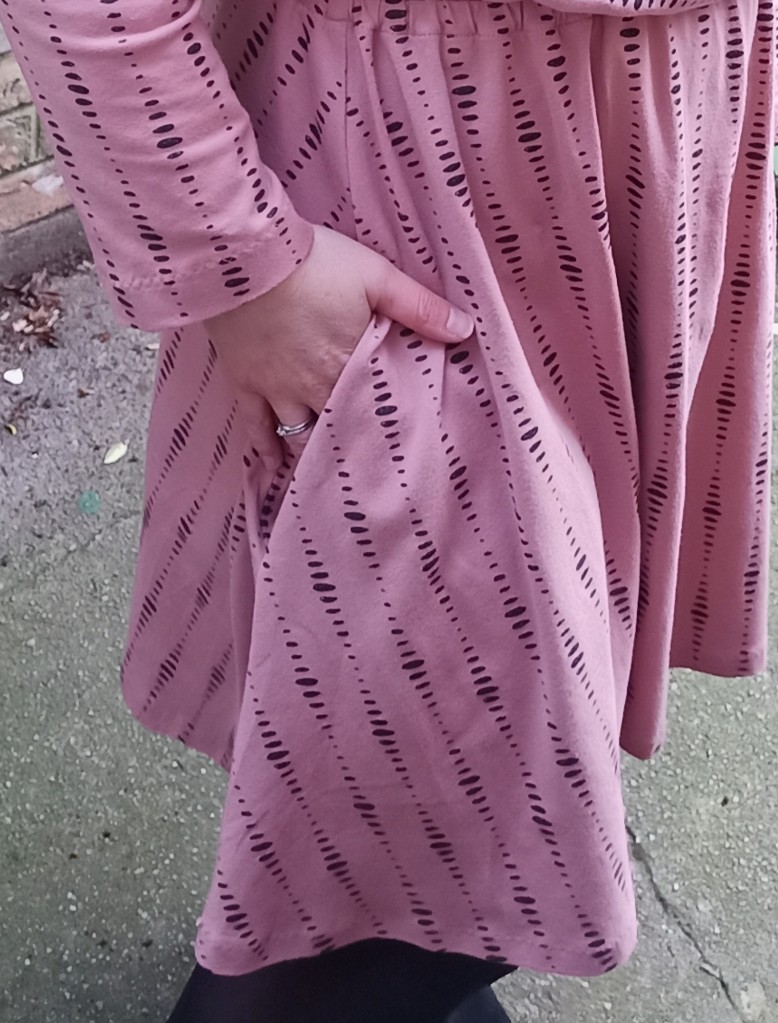In January, my eternal quest for warmth led me on a hunt for some sweatshirting to make myself some jogging bottoms (aka “joggers”). For transparency, I should say that these joggers will never be used for jogging! I fell down a research rabbit hole, looking at the history of jogging bottoms. These comfy trousers were invented in the 1920s and were meant to be “deal for your athletic needs”. 100 years later, I put it to you that they are ideal for all my lounging needs!
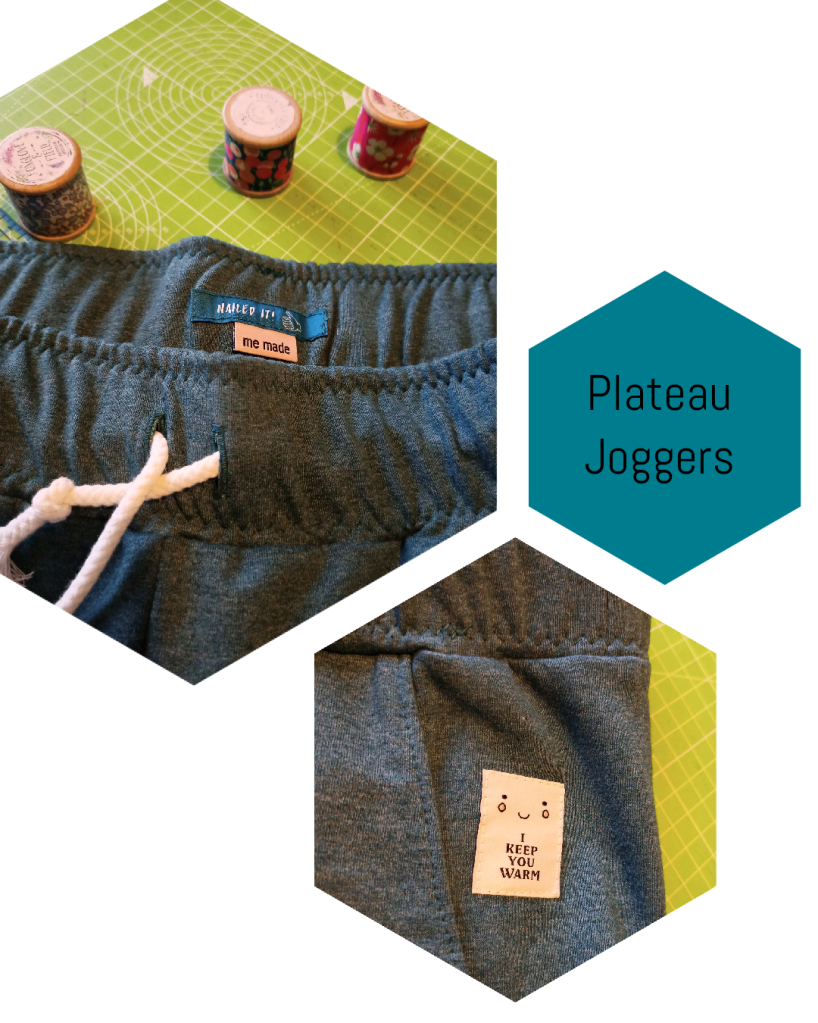
Lucky shopping
Initially I only wanted fabric but I quickly fell upon the Plateau joggers kit in the Guthrie Ghani January sale. This “flat-pack” sewing approach comes with everything needed to make a garment – fabric, notions and pattern. Knowing that the Emerson kit I bought in the summer was such an enjoyable experience, I clicked for more information.
The fabric was exactly what I had been on the hunt for, plus the sale price of the kit meant that the patterns and notions were practically free. This teal fleece-backed sweatshirting is so snuggly and soft – perfect for slouching around the house and doing Pilates.
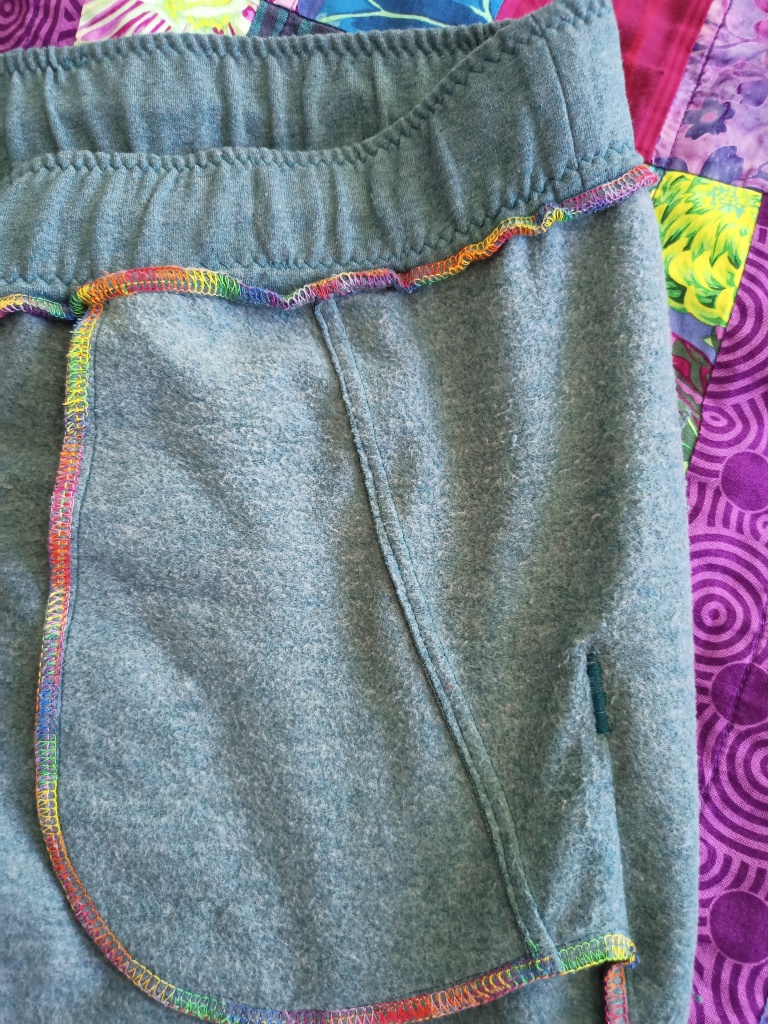
Happy accident
I intended to make the elasticated cuff version but it didn’t quite go to plan. The pattern says it is drafted for somebody who is 5’6″, so I dutifully shortened the pieces by 2″. I’m 5’2″, but erred on the side of caution…thankfully.
Whilst sewing, I realised that the joggers came up much shorter than I wanted. I like the legs to finish around my ankles with a bit left over. Confused, I looked at the photos of the pattern online and realised the joggers are supposed to be cropped but this wasn’t clear from the illustration on the pattern. I dug the remnants out and cut two fabric cuffs – a lesson in always keeping remnants for emergencies and mending! In the end, fabric cuffs made them the perfect length and meant I didn’t need to feed elastic through channels, so it worked out. Phew.
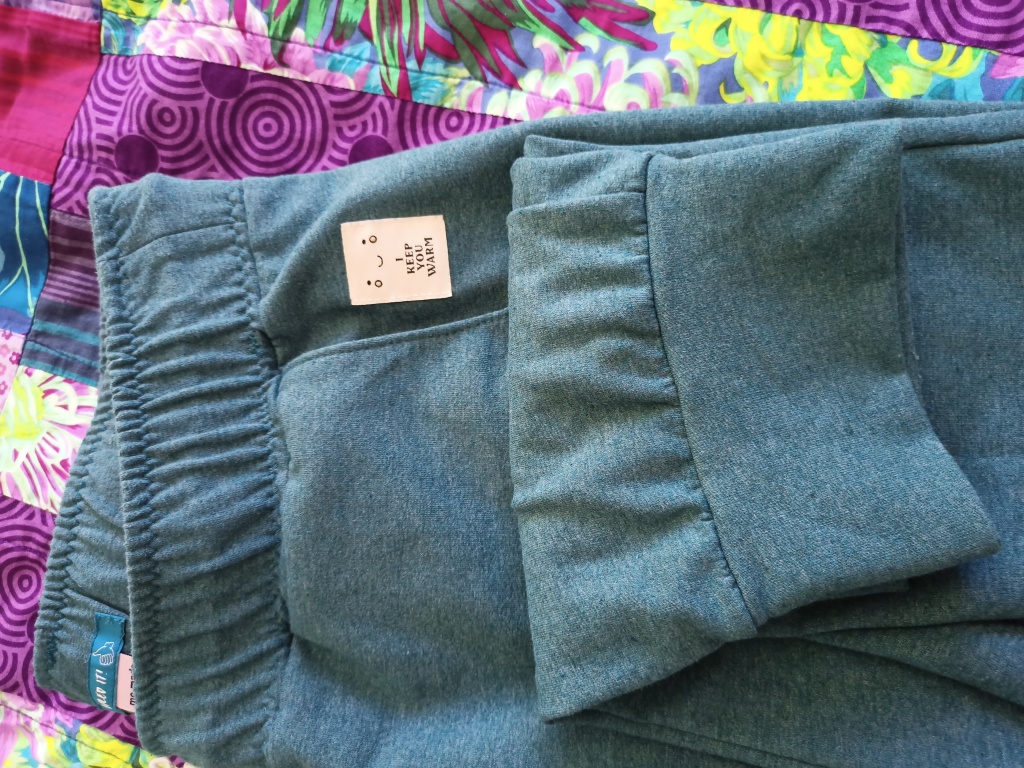
I found the construction of pockets really interesting, making these joggers more than “your average trouser” construction. There’s no side seam at the very top between the waistband and pocket bottom. I won’t attempt to explain it further, but it’s really clever and kept me guessing whilst putting them together. Sometimes I like it when a seemingly “simple” pattern has an interesting twist because it makes the making process that little bit more exciting.
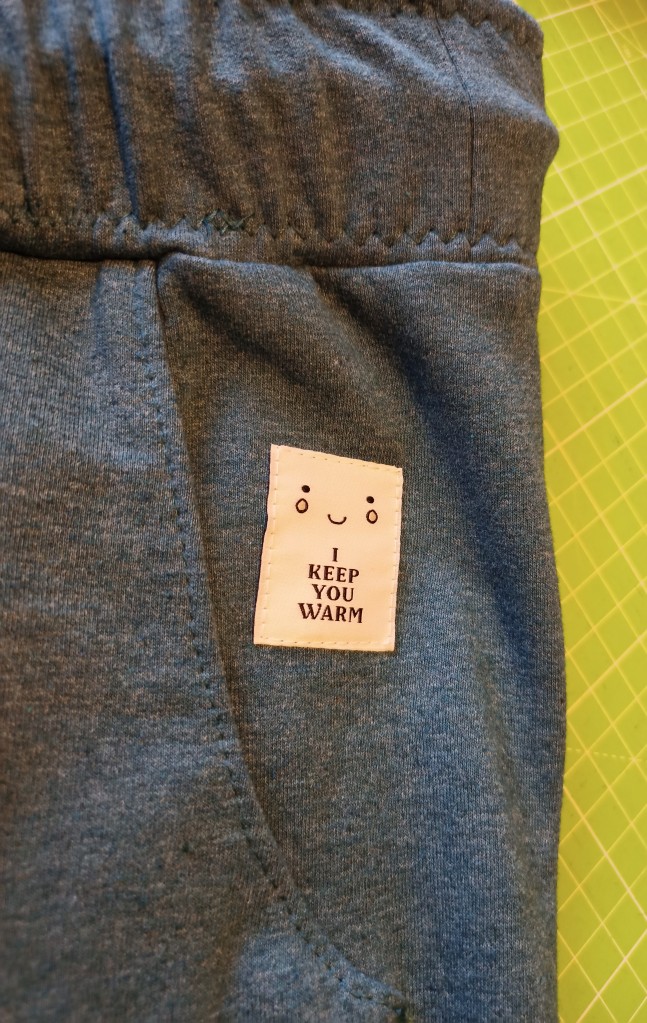
Do I have any other “bottoms”?
When I finished my Plateau joggers, I wore them fairly constantly for a number of days. Other bottoms lay neglected in the wardrobe, wondering if they would ever be worn again. Eventually, a trip to the office and the expectation to be ‘smart’ got me out of them. They have already been through the laundry a few times and are washing well. The fit is good, the pockets are generous and they definitely fulfil their purpose.
Whilst not the most exciting sew, we all need essentials in our wardrobe! Thanks for reading :o)
